When Harold Camping, a Christian radio broadcaster, predicted that Christ would return on May 21, 2011, he made national news. Many of his followers paid for billboards, took out full-page ads in newspapers, and distributed thousands of tracts about this day of reckoning. One engineer spent most of his retirement savings, well over a half-million dollars. He took out full-page newspaper ads and bought an RV that he had custom-painted with doomsday warnings. When May 21 came and went as normal, Harold Camping revised his prediction to October 21, 2011. Of course, that prediction failed too.
What happened to those who had so fervently believed? They lost their faith. They stopped reading the Bible. They quit Christianity. Of course, it wasn’t the Bible that was wrong—it was Harold Camping who was wrong.
 When we firmly, completely, uncompromisingly put our trust in a particular way of viewing the Bible, ironically we put ourselves at risk of disbelief. Why? Because if one brick of the structure we have built crumbles, then the whole edifice falls.
When we firmly, completely, uncompromisingly put our trust in a particular way of viewing the Bible, ironically we put ourselves at risk of disbelief. Why? Because if one brick of the structure we have built crumbles, then the whole edifice falls.
If we believe a perfect Bible written two thousand years ago should follow the rules of 21st-century historiography but then see a discrepancy between two gospel accounts, what should we conclude? If we think the Bible gives unassailable information regarding science, but then find what looks to be compelling evidence for four-billion-year-old planet, what should we think?
Should we think the Bible is wrong or that our particular way of viewing the Bible was wrong?
Should we walk away from faith, or should we reframe our faith?
Augustine put it this way centuries ago:
In matters that are obscure and far beyond our vision, even in such as we may find treated in Holy Scripture, different interpretations are sometimes possible without prejudice to the faith we have received. In such a case, we should not rush in headlong and so firmly take our stand on one side that, if further progress in the search of truth justly undermines this position, we too fall with it. That would be to battle not for the teaching of Holy Scripture but for our own, wishing its teaching to conform to ours, whereas we ought to wish ours to conform to that of Sacred Scripture…We should remember that Scripture, even in its obscure passages, has been written to nourish our souls.*
We need to learn objections to and questions about the Bible early and often. We need to treat such concerns with respect and appreciation. That way, we won’t be surprised and our faith won’t be shaken later if we find value or insight in those concerns.
And yes, we can learn answers to these problems as well. But we should also learn that our preferred answers are not the only possible, valid ways to respond, that there are other ways to affirm the truth of the Bible and the worth of our faith.
So believe. But believe with humility. Believe with openmindedness. Believe knowing there is always more to learn. Believe knowing that we are finite and limited while God is not.
—–
*John Hammond Taylor, S. J., trans, St. Augustine, the Literal Meaning of Genesis, vol. 1, Ancient Christian Writers., vol. 41, (New York: Paulist Press, 1982), 41-43.
photo credit: pixabay, cobain86


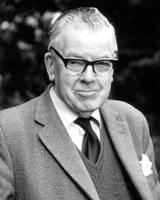
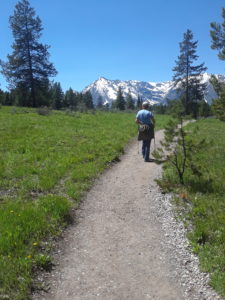 The emphasis on conversionism has had another effect. It has made evangelicals more individualistic than Catholics, who are oriented more toward the community of faith as a primary means for drawing closer to God. Certainly American individualism has had a tremendous impact on American Catholicism as well. American Catholics are much more willing, as mentioned earlier, to disagree with and act contrary to the Church’s teachings than Catholics in many other countries. Nonetheless, when it comes to spirituality, it is primarily a matter of the community.
The emphasis on conversionism has had another effect. It has made evangelicals more individualistic than Catholics, who are oriented more toward the community of faith as a primary means for drawing closer to God. Certainly American individualism has had a tremendous impact on American Catholicism as well. American Catholics are much more willing, as mentioned earlier, to disagree with and act contrary to the Church’s teachings than Catholics in many other countries. Nonetheless, when it comes to spirituality, it is primarily a matter of the community. I said, “The Road to Emmaus is a paradigm of Catholic spirituality, right? Spiritual growth is a journey that we go on. And Christ travels with us on this journey even though we may not know he is there. But we recognize him in the breaking of the bread, in the Eucharist. And our immediate instinct at such times of significant encounter with Christ is to go to the community, just as the two on the Road to Emmaus did. So we have in this paradigm the key elements of the journey, the presence of Christ, the Eucharist and the community that make up much of Catholic spirituality.”2 He looked completely bored, as if I were telling him the sun rises in the east and sets in the west.
I said, “The Road to Emmaus is a paradigm of Catholic spirituality, right? Spiritual growth is a journey that we go on. And Christ travels with us on this journey even though we may not know he is there. But we recognize him in the breaking of the bread, in the Eucharist. And our immediate instinct at such times of significant encounter with Christ is to go to the community, just as the two on the Road to Emmaus did. So we have in this paradigm the key elements of the journey, the presence of Christ, the Eucharist and the community that make up much of Catholic spirituality.”2 He looked completely bored, as if I were telling him the sun rises in the east and sets in the west. “Exactly. Spiritual growth happens in crisis events when we are suddenly thrust to a higher or deeper level of intimacy and commitment to Christ. From that moment we are radically changed. Spirituality proceeds dialectically. There is a radical discontinuity of the past from the future. Sometimes that moment is the crisis of conversion. Sometimes it is hearing a calling or some other new spiritual experience. So I think your Protestant friends may be expecting a Damascus Road experience.”
“Exactly. Spiritual growth happens in crisis events when we are suddenly thrust to a higher or deeper level of intimacy and commitment to Christ. From that moment we are radically changed. Spirituality proceeds dialectically. There is a radical discontinuity of the past from the future. Sometimes that moment is the crisis of conversion. Sometimes it is hearing a calling or some other new spiritual experience. So I think your Protestant friends may be expecting a Damascus Road experience.”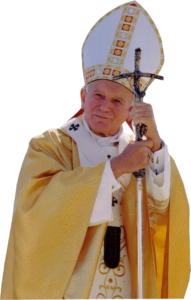 Catholics, by contrast, are very happy to think in terms of both/and. John Paul II was highly revered by Catholics, yet large majorities of Catholics (particularly in North America) felt perfectly at peace disagreeing with him on birth control, priestly celibacy and stem cell research. The inconsistency bothers them little.
Catholics, by contrast, are very happy to think in terms of both/and. John Paul II was highly revered by Catholics, yet large majorities of Catholics (particularly in North America) felt perfectly at peace disagreeing with him on birth control, priestly celibacy and stem cell research. The inconsistency bothers them little.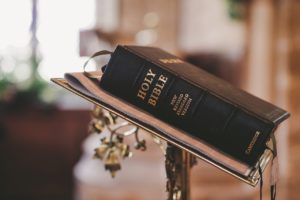 For evangelicals, the game is thought to be won or lost on statements. If we can’t have fixed truth expressed in words, we are subject to every wind of doctrine. We lack an anchor and may drift into heresy or at least into the shoals of liberalism. While Catholics lean toward analogical thinking, Evangelicals tend to embrace what Tracy calls the dialectical imagination. Since we have a tendency to deceive ourselves, we seek certainty. Symbols are too vague to achieve this. Propositions warn us clearly against error, set limits and call us back to truth.
For evangelicals, the game is thought to be won or lost on statements. If we can’t have fixed truth expressed in words, we are subject to every wind of doctrine. We lack an anchor and may drift into heresy or at least into the shoals of liberalism. While Catholics lean toward analogical thinking, Evangelicals tend to embrace what Tracy calls the dialectical imagination. Since we have a tendency to deceive ourselves, we seek certainty. Symbols are too vague to achieve this. Propositions warn us clearly against error, set limits and call us back to truth. It could only have been someone with God’s sense of humor who had brought us together. But we both loved Jesus and each other, and assumed that was enough.
It could only have been someone with God’s sense of humor who had brought us together. But we both loved Jesus and each other, and assumed that was enough. For Catholics, it was not the document at all that was primary. It was the community, the people of God, the unity of the people of God. If signing the document could help preserve that unity, by all means, sign it—and then do what your conscience requires.
For Catholics, it was not the document at all that was primary. It was the community, the people of God, the unity of the people of God. If signing the document could help preserve that unity, by all means, sign it—and then do what your conscience requires.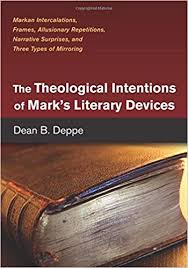
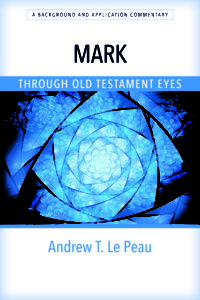

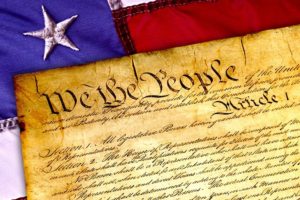 What of the initial question that inspired the book? He only hints at answers. Certainly the crucified image of the righteous sufferer has remained strong, inspiring many to follow his example even at great risk. Also, it is hard to imagine the Bill of Rights and the United Nations Universal Declaration of Human Rights emerging without the widespread influence of Jesus. “The pressure to make peace [in various quarters of today’s world] is quite unlike anything the Greeks or Romans or even the Elizabethans could have imagined” (310).
What of the initial question that inspired the book? He only hints at answers. Certainly the crucified image of the righteous sufferer has remained strong, inspiring many to follow his example even at great risk. Also, it is hard to imagine the Bill of Rights and the United Nations Universal Declaration of Human Rights emerging without the widespread influence of Jesus. “The pressure to make peace [in various quarters of today’s world] is quite unlike anything the Greeks or Romans or even the Elizabethans could have imagined” (310).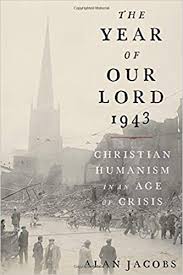
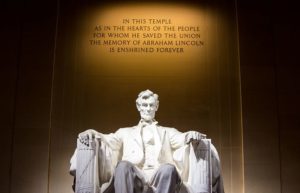 The unwritten agenda of this book and its relevance for today seems to be the similar questions that are now afoot. Does democracy have a future? Can it withstand the impulses of our now hyper technological society joined with the forces of nationalism which once more assert themselves–now in currently democratic societies like Great Britain, India, the United States and elsewhere? What role if any does Christianity have to play other than chaplain to the powers or hand-wringing bystander?
The unwritten agenda of this book and its relevance for today seems to be the similar questions that are now afoot. Does democracy have a future? Can it withstand the impulses of our now hyper technological society joined with the forces of nationalism which once more assert themselves–now in currently democratic societies like Great Britain, India, the United States and elsewhere? What role if any does Christianity have to play other than chaplain to the powers or hand-wringing bystander? There was no horse. Acts 9 doesn’t mention it. What about the other two times in Acts that Paul tells his story of meeting Jesus? No horse. Maybe it’s in one of Paul’s letters where he gives a bit of his life story? Sorry. No horse. Even reputable writers like Thomas Cahill perpetuate the myth.*
There was no horse. Acts 9 doesn’t mention it. What about the other two times in Acts that Paul tells his story of meeting Jesus? No horse. Maybe it’s in one of Paul’s letters where he gives a bit of his life story? Sorry. No horse. Even reputable writers like Thomas Cahill perpetuate the myth.*